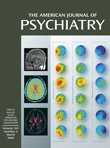Valproic Acid and Hypersensitivity Syndrome
Mr. A, a 48-year-old man, had been diagnosed with schizoaffective disorder 30 years previously and had been treated with haloperidol, fluphenazine, promethazine, and biperiden. He was admitted to a psychiatric hospital with schizomanic syndrome and was treated initially with oral haloperidol, fluphenazine, diazepam, clomethiazole, promethazine, biperiden, and vitamins B1 and B6. On day 3, his therapy was switched to prolonged-release oral valproic acid, amisulpride, and lithium; administration of vitamins B1 and B6 was continued.Three weeks after initiation of therapy, Mr. A developed a generalized maculopapular rash with lymphadenopathy and fever (39.1°C); his total WBC count was 14.2 cells/nl, and his levels of transaminases and creatinine were slightly elevated.We discontinued valproic acid and vitamins B1 and B6 after diagnosing a severe adverse drug reaction presenting as hypersensitivity syndrome. We introduced olanzapine with prednisolone (initially 80 mg/day). The skin rash as well as other clinical symptoms (including an intermittently elevated WBC count of 37.9 cells/nl with maximal eosinophilia of 24%) remitted completely in the next week. Therapy with corticosteroids was tapered over 3 weeks. After release from the hospital, Mr. A remained stable over the following 3 months while taking olanzapine, amisulpride, and lithium.A skin patch test performed at 3 months to test for valproate and vitamins B1 and B6 (pure and 30% in distilled water, respectively) gave a positive reading for the valproic acid preparations at 72 hours, while three healthy volunteers were negative for these compounds.
References
Information & Authors
Information
Published In
History
Authors
Metrics & Citations
Metrics
Citations
Export Citations
If you have the appropriate software installed, you can download article citation data to the citation manager of your choice. Simply select your manager software from the list below and click Download.
For more information or tips please see 'Downloading to a citation manager' in the Help menu.
There are no citations for this item
View Options
View options
PDF/ePub
View PDF/ePubGet Access
Login options
Already a subscriber? Access your subscription through your login credentials or your institution for full access to this article.
Personal login Institutional Login Open Athens loginNot a subscriber?
PsychiatryOnline subscription options offer access to the DSM-5-TR® library, books, journals, CME, and patient resources. This all-in-one virtual library provides psychiatrists and mental health professionals with key resources for diagnosis, treatment, research, and professional development.
Need more help? PsychiatryOnline Customer Service may be reached by emailing [email protected] or by calling 800-368-5777 (in the U.S.) or 703-907-7322 (outside the U.S.).

